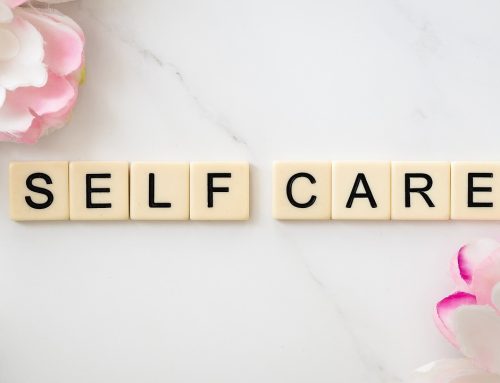May is one of our favorite months here at Mines & Associates – Mental Health Awareness Month. At MINES, we’re passionate about changing the discourse around mental health and fighting back against stigma.
Although stigma against mental health issues undeniably continues to exist, we also want to take a moment to celebrate just how far we’ve come. That doesn’t mean we’ll stop fighting against mental health stigma, especially in the workplace – but the wins we’ve all gained together over time deserve to be recognized. Mines & Associates offers mental health services and training solutions to our customers.
How has mental health awareness changed over time?
Although stigma continues to be present against people with mental health conditions, we’ve come a long way in recent years.
As long as humankind has recognized mental illness, there has been a stigma against people who live with it. Before modern science was able to help people understand mental illness as just that – an illness – people with mental illness were believed to be suffering from a spiritual affliction, like being possessed by the devil.
Because of this, the suggested “cure” for people with mental illness was typically to find a way to let evil spirits out. The earliest procedure that we know of, called trepanning, involved chipping a hole in the person’s skull using stone tools. This was thought of as a way to release evil spirits, and for obvious reasons was very risky and dangerous.
For thousands of years, people with mental illnesses were ostracized by society. Typically, they were physically removed from their homes to be put in institutions or “madhouses.”
The mental health institutions that were prevalent between approximately the 1300s and 1700s typically functioned as mere prisons where people with mental illness could be kept away from the general public. Conditions were inhumane, and people were often locked up in small rooms. Suffering patients were even displayed to the public as a sort of “freak show.”
The 1800s brought about a revolution of sorts in the way people thought about and approached mental health. Institutions, which were now called asylums, had a higher focus on treatment and rehabilitation. The work of Sigmund Freud and his peers also brought about a better understanding of the causes of mental illness.
The stigma against people with mental illness continues to this day, but we have a better collective awareness of the fact that mental health is something that affects all of us. If you’d like to learn more, contact Mines & Associates and ask about our mental health services and training solutions.
Mental health stigma in today’s society
Research has shown that stigma against mental health issues has decreased in recent years. We no longer lock people who live with mental health issues away in institutions. People with mental illness have the same legal rights as anyone else. And younger generations are undoubtedly more open to talking about mental health issues, with videos with the hashtag #mentalhealth on TikTok generating nearly 80 billion views.
One study found a clear decrease (over 22 years) in stigma against depression and a more scientific understanding of what causes schizophrenia and alcohol abuse.
However, the same study found that there was an increase in the number of people who associated alcohol abuse with bad character, and believed people with schizophrenia were violent or dangerous, during that 22-year period.
This shows us that we still have a long way to go. According to the American Psychiatric Association, up to half of people who need mental health support don’t seek it. Even though the reasons behind this are complex, there’s no doubt that stigma plays a role.
Mental health stigma at work
Stigma against mental health issues continues to be particularly strong in the workplace. In one poll, only around 1 in 5 people felt completely comfortable talking about mental health issues at work. More than 1 in 3 were worried about retaliation or getting fired for seeking mental health care.
The good news is that this is changing with every new generation. People in Gen-Z were twice as likely as boomers to feel comfortable talking about their mental health at work.
In some ways, perhaps these words written by sociologist Erwin Goffman in 1963 remain true: “There is no country, society or culture where people with mental illness have the same societal value as people without mental illness.”
But we also need to recognize – and celebrate – that we’ve come a long way.
Does this mean we stop fighting against the stigma that does still exist? Absolutely not. Research shows that one of the best ways to combat stigma is to expose ourselves and others to having relationships with people who have mental illnesses. The more open we are about our own mental health concerns, the
How to promote good mental health in yourself and others
Another important point is that the discussion around mental health and stigma needs to go beyond talking about how we treat people with mental illness. We need to also talk about the full continuum of mental health – and what it means to be truly mentally well beyond just the absence of mental illness.
Of course, there should be no stigma against people who do live with mental illness. And it’s important to recognize mental illness when it is present so that you can get the treatment you need.
But mental health is about a lot more than not having a mental illness. Just like physical health, mental health ranges from having a severe mental illness to having excellent mental health, and everything in between. The more we talk about this, the more we realize that mental health is a topic of discussion that affects all of us, whether or not you or someone you know lives with a mental illness. If you’d like additional help, be sure to contact Mines & Associates to learn more about our mental health training and service solutions.
Here are some tips to promote good mental health in yourself and those around you.
Take care of your body
Physical and mental health are intertwined. People with physical health conditions are more likely to experience poor mental health like depression and stress. Although physical health problems aren’t the only factor that can heighten your risk for poor mental health, taking care of your physical health can be a great way to ward off things like depression and anxiety.
Physical exercise, in particular, has been shown to be a very effective intervention for depression and anxiety. You should also try to get 7 to 9 hours of restful sleep every night.
Build strong relationships
Another way to strengthen your mental health is to have a strong social support network. Poor social support can create a higher likelihood of loneliness and depression. Connect with the loved ones already in your life, and seek to build new connections if you feel lonely.
Seek support
We often think of counseling as something we seek only after we’re having trouble with our mental health. But just like you’d go to your primary care physician for an annual physical or to a fitness trainer simply to improve or maintain your physical health, you can see a counselor as a way to maintain good mental health as well. Please contact Mines & Associates to learn more about our mental health services and training solutions.
Going through your EAP is an easy way to get access to free and confidential counseling 24/7. Seeing a counselor could be the missing piece to your mental well-being. Give us a call or check with your employer to see what services you have access to on your plan.
To Your Well-Being,
The MINES Team












Leave A Comment